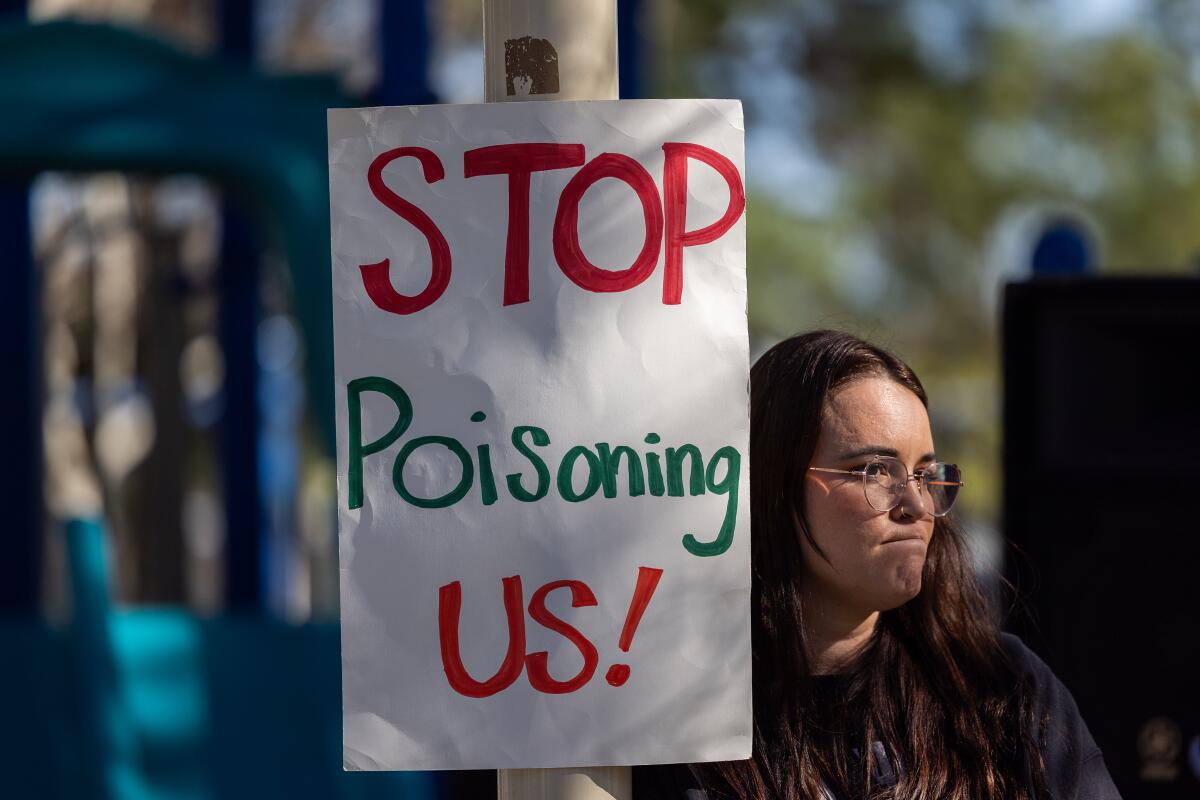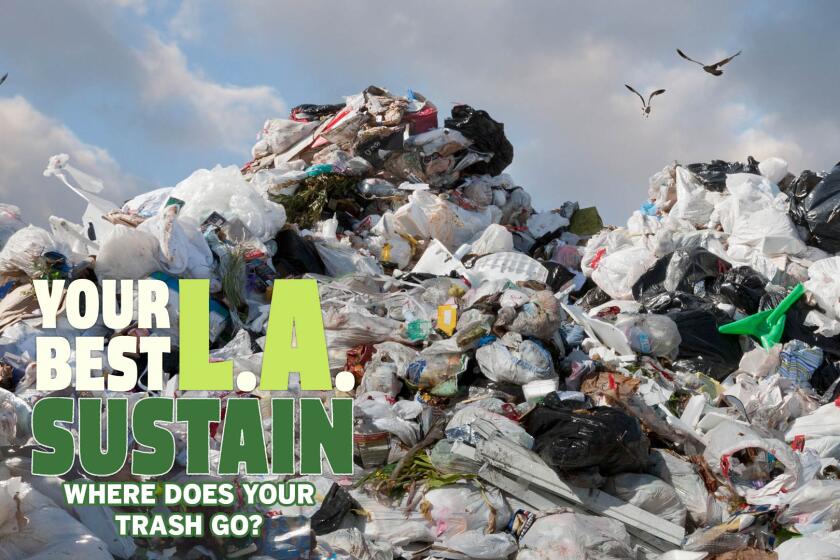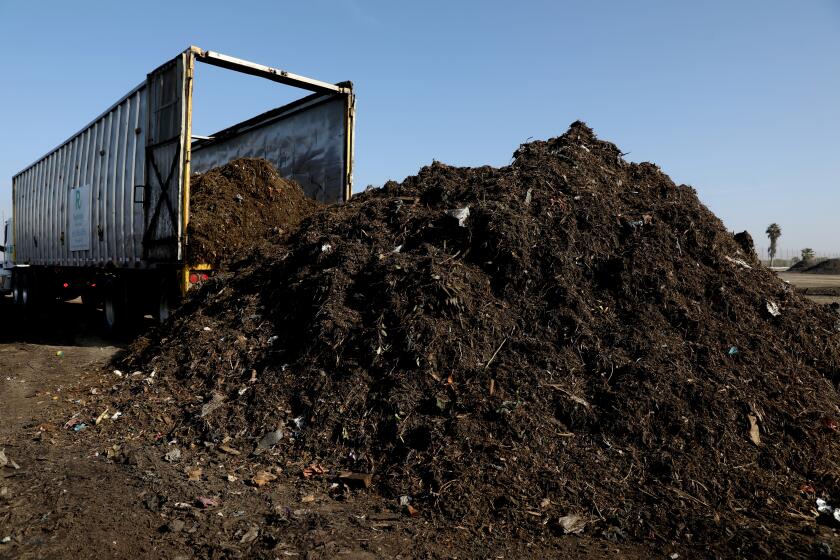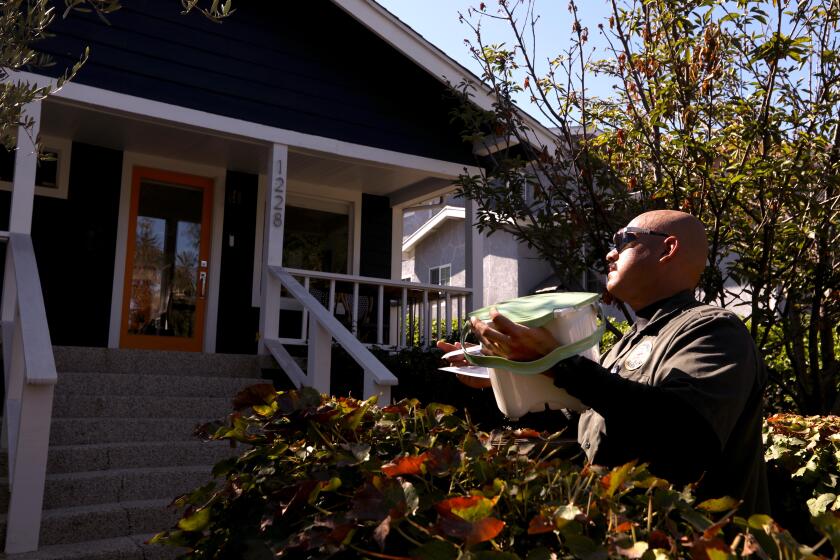Chiquita Canyon Landfill’s toxic fumes show the danger of continuing to dump our trash

- Share via
For months now, residents living near the Chiquita Canyon Landfill in Castaic have been sickened by putrid odors that induce headaches, bloody noses, nausea, dizziness, heart palpitations and other health maladies.
The source of the smells is a rare chemical reaction deep within the landfill, and the heat and pressure are triggering eruptions of hazardous liquid waste and noxious gases. Last month, the U.S. Environmental Protection Agency warned that the landfill presents an imminent danger, and ordered the operator to protect the neighboring community as it tries to control the “smoldering event.”
This week, at the request of L.A. County Supervisor Kathryn Barger, the landfill operator, Waste Connections, launched a website where residents and businesses can apply for temporary relocation, financial help with utility bills and air filtration systems and other home improvements to keep the odors at bay. But this comes after a year of suffering — and more than 7,000 odor complaints and 100 violations from environmental regulators. No one can say when the chemical reaction will be extinguished or when neighbors will get lasting relief.
Residents have filed at least one lawsuit to force the county to close the dump, but county and state officials say that won’t alleviate the immediate risk. The “smoldering event” is happening in part of the landfill that was filled and closed years ago.
Editorial: Don’t stop composting. California can’t afford to abandon its methane-busting law now
The state’s independent good government commission says California won’t make its 2025 organics recycling goal and the Legislature should suspend the law. But that would set back an important program to fight climate change.
This is the legacy of a consumer culture that mindlessly generates trash with little regard to what happens to all that waste, or the toxic chemicals it may contain. For decades, landfills have been the cheapest, easiest way to deal with the mountains of garbage people dispose of every year — just bury it in a canyon somewhere.
Now we have to grapple with the consequences, and not just for neighbors living next to the dumps. The decomposing organic waste in landfills is a major source of planet-warming methane emissions, which have increased over the last decade because Californians have been dumping more trash. That undermines the state’s fight to slow climate change.
California’s pioneering anti-plastic law hasn’t delivered on its promises to reduce reliance on disposable grocery sacks. It’s time to adopt tougher legislation.
Neighbors want to close Chiquita Canyon Landfill permanently. That is the appropriate long-term goal. California is still far too dependent on this primitive method of handling waste. And if Chiquita Canyon Landfill operators cannot put a stop to the odors and toxic leaks within a reasonable amount of time, then the dump should close sooner to protect public health and the environment. Why should the company be allowed to keep accepting trash if it cannot manage the closed portion of the landfill safely?
The quandary is what to do with the roughly 6,000 tons of waste currently dumped each day at Chiquita Canyon. Most likely, it would be trucked to another landfill in L.A. County, possibly Sunshine Canyon Landfill near Granada Hills. But that dump has had its own problems, including racking up 1,500 odor complaints and around 60 air quality violations last year, Times reporter Tony Briscoe found. There’s also talk of reviving a plan to transport garbage by train to a landfill in the desert.
On Monday, a city holiday, Los Angeles announced that the long-awaited curbside composting program was available citywide. Did anyone notice?
These are not meaningful solutions, however. Simply transporting trash and its environmental impact to other communities perpetuates the region’s reliance on the landfills. We have to build a better system that includes more alternatives to dumps, such as waste-to-energy plants, composting facilities and recycling and reuse programs.
Time and again, local and state leaders have voted to let landfills expand so the region would have cheaper garbage disposal options. Chiquita Canyon Landfill was supposed to close by November 2019. Instead, the Los Angeles County Board of Supervisors allowed the dump to expand and operate until 2037, or until it reaches 60 million tons of waste, nearly triple the previous capacity.
What’s happening now at Chiquita Canyon is a terrible reminder of the true cost of continuing to bury our trash. Los Angeles and the state need to move much faster to end our reliance on landfills.
More to Read
A cure for the common opinion
Get thought-provoking perspectives with our weekly newsletter.
You may occasionally receive promotional content from the Los Angeles Times.













